Air Operations, Bismarcks - The US 1st Marine Division lands at Cape Gloucester at 0746 hours.
- Among the units to be landed at Cape Gloucester is an ad hoc aerial artillery-spotting unit formed by the Marine artillery commander over the protests of the Marine aviation community. The unit is equipped with 12 Piper Cub light liaison planes borrowed from the US Army and manned by Marine infantry volunteers—including low-ranking enlisted Marines—with flying experience.
- A new feature of the preinvasion bombardment is the use of phosphorous smoke bombs, which are dropped on observation posts and artillery sites in order to cloud the vision of observers who might call or direct artillery against the invasion forces.
- Mistaking the approaching Cape Gloucester invasion fleet for a reinforcement convoy bound for Arawe, the Japanese send 25 D3A 'Val' dive bombers and 63 fighters to Arawe, where, shortly after 0900 hours, the bombers mount an unopposed attack against the beachhead.
- Rabaul-based D3A 'Val' dive bombers, escorted by approximately 50 fighters, attack the Cape Gloucester invasion fleet and landing force at 1430 hours. One US destroyer is sunk and several other ships are damaged.
- V Fighter Command pilots down 21 'Val' dive bombers and 23 fighters in the Cape Gloucester area between 1435 and 1445, and 16 G4M 'Betty' bombers and a Ki-61 'Tony' fighter, also in the Cape Gloucester area, at 1700 hours. 2 P-38s and 2 P-47s are lost in the air, and 1 P-47 is shot down by friendly gunners.
- Throughout the day, V Bomber Command B-24s, B-25s, and A-20s controlled by the 5 Air Force’s 1st Air Task Force mount more than 270 effective sorties against targets between Cape Gloucester and Borgen Bay. Among them are attacks against defensive targets near the invasion beaches made moments before the actual landings by 43 B-24s followed by 38 B-25s.
- 7 42nd Medium Bomb Group B-25s, escorted by 34 AirSols fighters, attack targets in the Cape St. George area.
[  | |   ] ]
Air Operations, CBI
BURMA
- 459th Fighter Squadron P-38s attack the airfield at Anisakan, the Japanese Army central Burma air headquarters.
[  | |   ] ]
Air Operations, Europe
15th AIR FORCE
ITALY:
- 15th Air Force B-26s are able to attack marshalling yards at three locations.
[  | |   ] ]
Air Operations, Marshalls 16 VII Bomber Command B-24s pass through Hawkins Field on Betio to attack the Wotje Atoll as 318th Fighter Group P-39s strafe and reconnoiter targets in the Mille Atoll.
[  | |   ] ]
Air Operations, Solomons - 25 42nd Medium Bomb Group B-25s attack Kahili. US Navy PVs attack several targets while conducting reconnaissance missions.
- At 0945 hours, VMTB-143 TBFs employing 100-pound bombs force a Japanese Army battalion-size force to withdraw from a defensive zone a full day before US Marine Corps ground troops can reach the area to mop it up. (This is the last direct-support mission of the Bougainville Campaign, and the last undertaken by USMC bomber pilots until January 1945, in the Philippines.)
[  | |   ] ]
Arctic In the morning Scharnhorst and her destroyers search for a convoy heading to Russia, but find instead the 3-cruiser covering force led by Adm Robert Burnett. Visibility is extremely poor and early on Scharnhorst's forward radar set is put out of action. Bey therefore breaks off the engagement and circles north to try to find the convoy. At midday Scharnhorst and the cruisers again fight but in better visibility which, combined with the disadvantage of the heavy seas for the smaller ships, should have made things easier for the Germans. If the attack had been pressed home Bey would almost certainly have got among the convoy which was only escorted by small ships with little torpedo armament. Instead the action is broken off. As Scharnhorst retreats, Duke of York, with Adm Bruce Fraser aboard, comes up and a gun duel begins, surprising the Germans. The British battleship gains the upper hand and eventually the prolonged bombardment and torpedo attacks reduce the Scharnhorst to a wreck and she sinks off the North Cape. Only 36 out of her crew of 1,970 are saved. The Germans now have no large surface ships operational to threaten the Arctic convoys and an important restraint on British dispositions is removed for the rest of the war.
[  | |   ] ]
Atlantic In Operation TRAVE a German destroyer-torpedo boat force is dispatched to escort the blockade-runner Alsterufer, but she is sunk before the rendezvous. The escorts then attack the British cruisers Enterprise and Glasgow. The British sink Z-27 and 2 torpedo boats.
[  | |   ] ]
Eastern Front In their offensive in the Kiev sector the Soviets capture Radomyshl. The Russians announce their new offensive in the Kiev salient. Over 150 places are taken.
SOUTHERN SECTOR
Korostychev falls to the 3rd Guards Tank Army while the 60th Army closes upon Korosten. A counterattack by the XLVIII Panzer Corps against the 3rd Guards Tank is brushed aside.
[  | |   ] ]
Germany, Home Front Col Count von Stauffenberg prepares to assassinate Hitler at a staff conference, but the Führer changes his plans.
[  | |   ] ]
Italy In the US 5th Army's II Corps area, some elements of the 36th Division clear Morelo Hill; others take responsibility for Hill 730. Sammucro hills are now completely cleared of the enemy. In the VI Corps area, the 8th Rifle Regiment of the 2nd Moroccan Division attacks Mainarde ridge, north of the Atina road, unsuccessfully.
[  | |   ] ]
New Britain At 0600 2 American cruisers and 8 destroyers open fire on the Japanese positions on Cape Gloucester, finishing off the work of destruction begun some weeks earlier by B-24 Liberator bombers, which have dropped 2,000 tons of bombs on the area. At 0746 Gen William H. Rupertus' 1st Marine Div begins landings near Cape Gloucester in 3 places. 2 units land in Borgen Bay, northeast of the Cape, where they meet negligible Japanese opposition, partly on account of the surprise effected, partly owing to the terrible nature of the marshy ground, which the Americans later called the 'green hell' and the 'slimy sewer'. The other landing is at Tauali, southwest of the Japanese airfield on Cape Gloucester, and a brigade of engineers goes ashore on Long Island. Adm Barbey's Task Force 76 provides the transport and 2 other groups of cruisers and destroyers are in support. 1 of these destroyers, the Brownson (DD-518), is sunk by a Japanese air attack. The landing forces get ashore without incident although the terrain is extremely difficult. There are a few small Japanese attacks during the first night but they are driven off. Only the Japanese air force makes an effective effort to oppose the landing, sinking one US destroyer and damaging 3 others, the Lamson (DD-367), the Shaw (DD-373) and the Mugford (DD-389) besides 1 landing craft, LST 66.
[  | |   ] ]
Images from December 26, 1943
Early Morning Bombardment
|
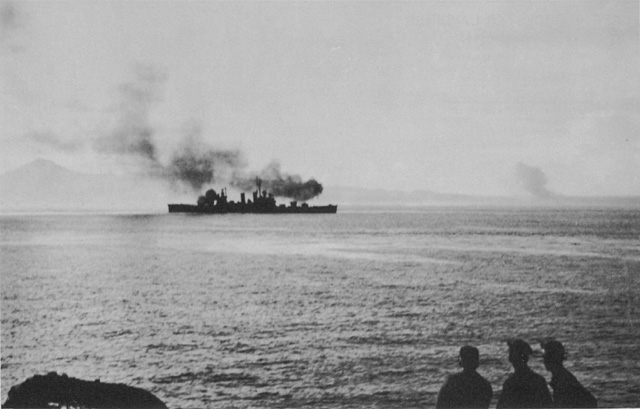 |
|
Bombarding Cape Gloucester
|
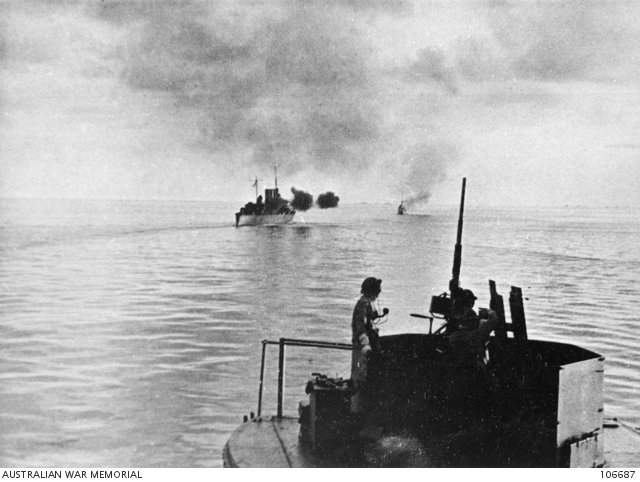 |
|
Marines Wading Ashore
|
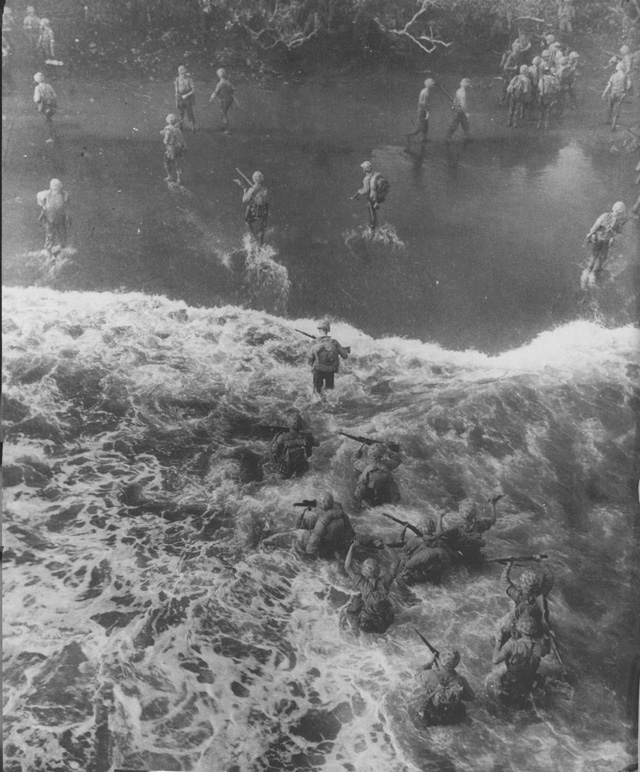 |
|
Fallschirmjäger
|
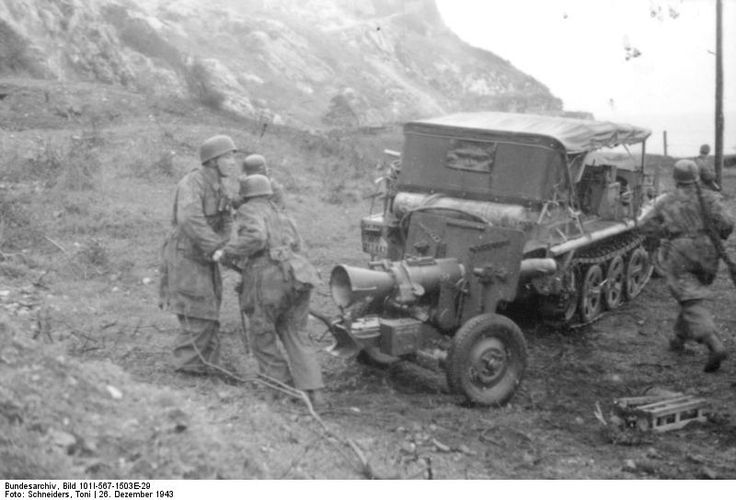 |
|
The British Battleship HMS Duke of York
|
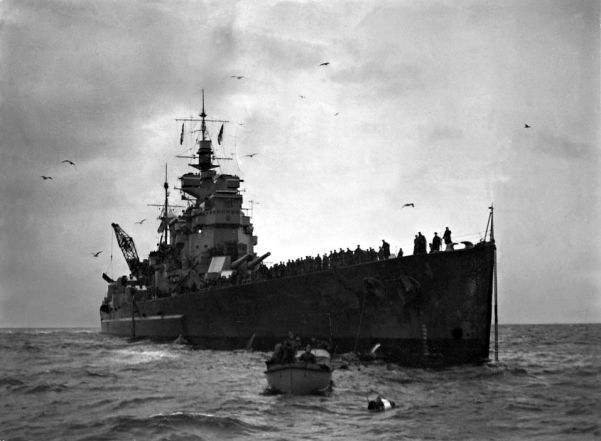 |
|
German Paratroopers Manning an 88
|
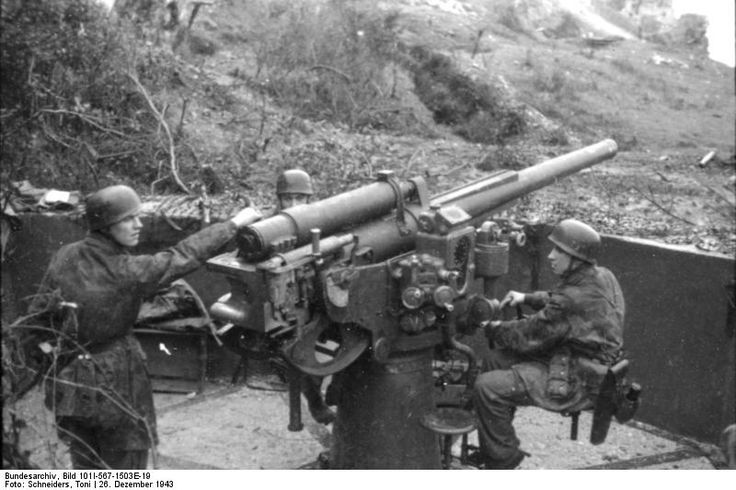 |
|
Portrait of the Scharnhorst
|
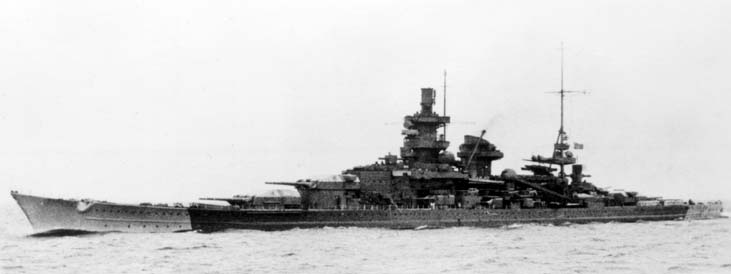 |
|
Survivors of the Scharnhorst
|
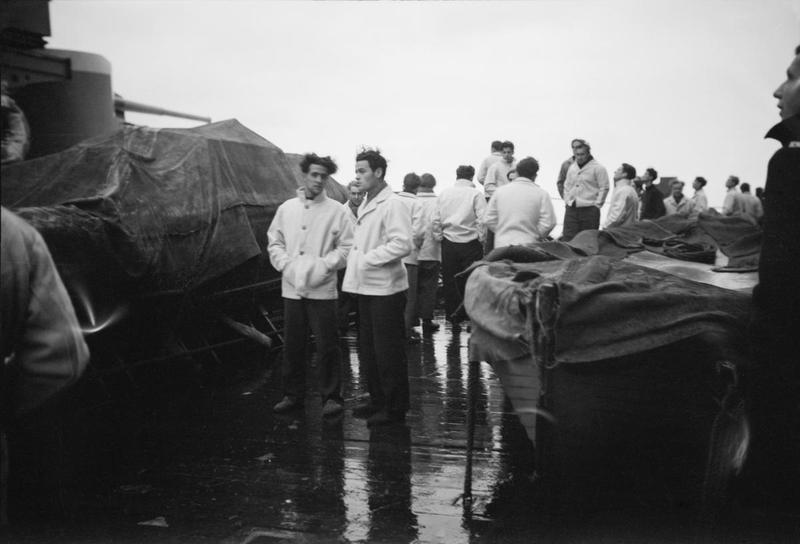 |
|
US Marines March Ashore
|
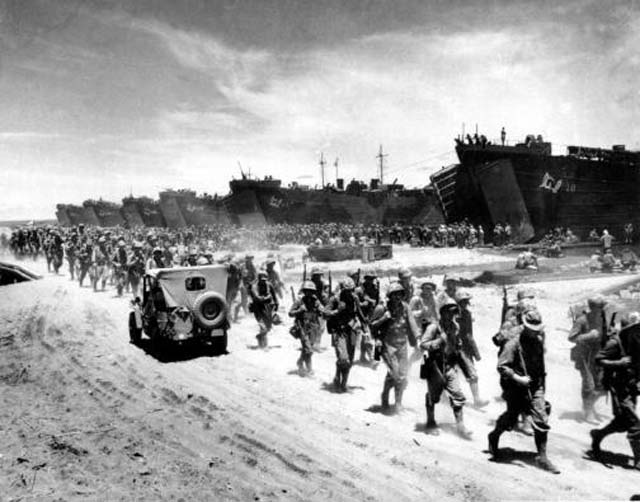 |
|
German Paratroopers Firing a Recoilless Cannon
|
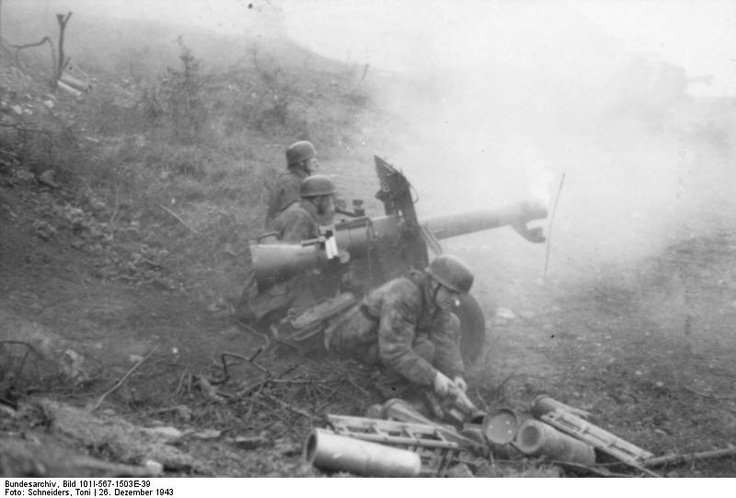 |
|
German Officers Inspect and Strip an FG 42
|
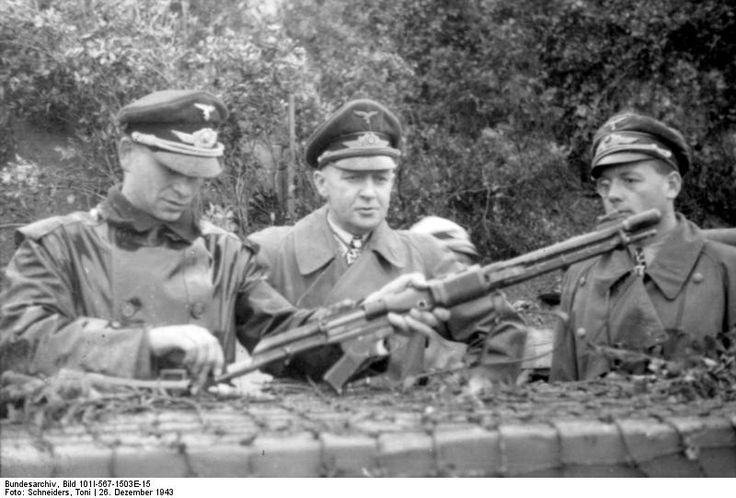 |
|
An M3 75-mm Gun Motor Carriage
|
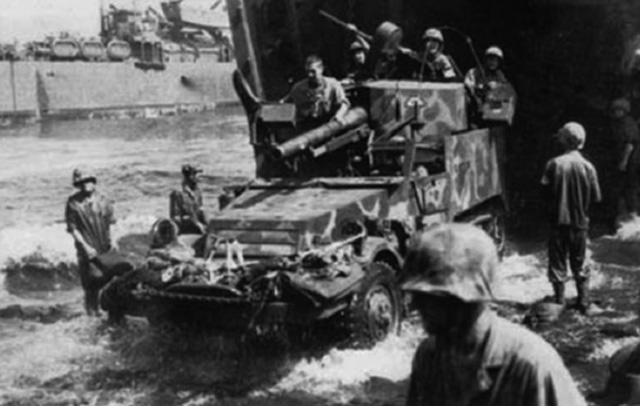 |
|
|











